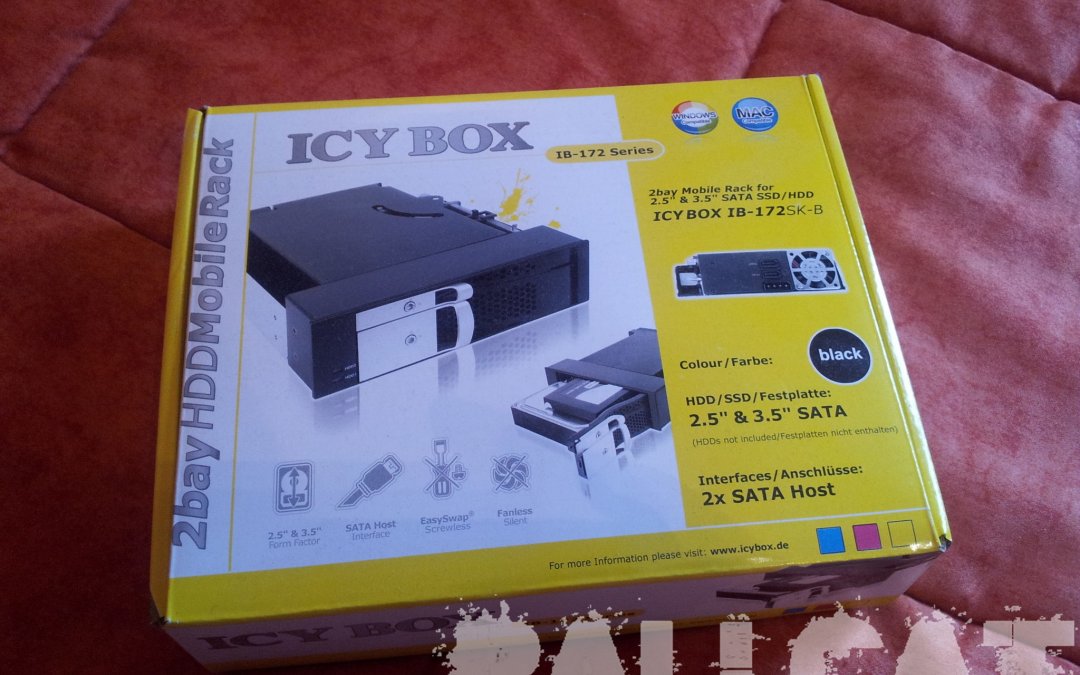
por Pali | Feb 5, 2014 | Hardware, Informàtica
Avui os porto la review d’un gag-jet que em vaig comprar per la meva torre i que no vaig tardar gaire a abandonar-lo en un prestatge, estic parlant d’una carcassa de doble baia per allotjar 1 disc dur de 3,5″ i un de 2,5″ en una baia de 5,25″, tot això afegint funcionalitat Hot Swap.
Anem amb les presentacions
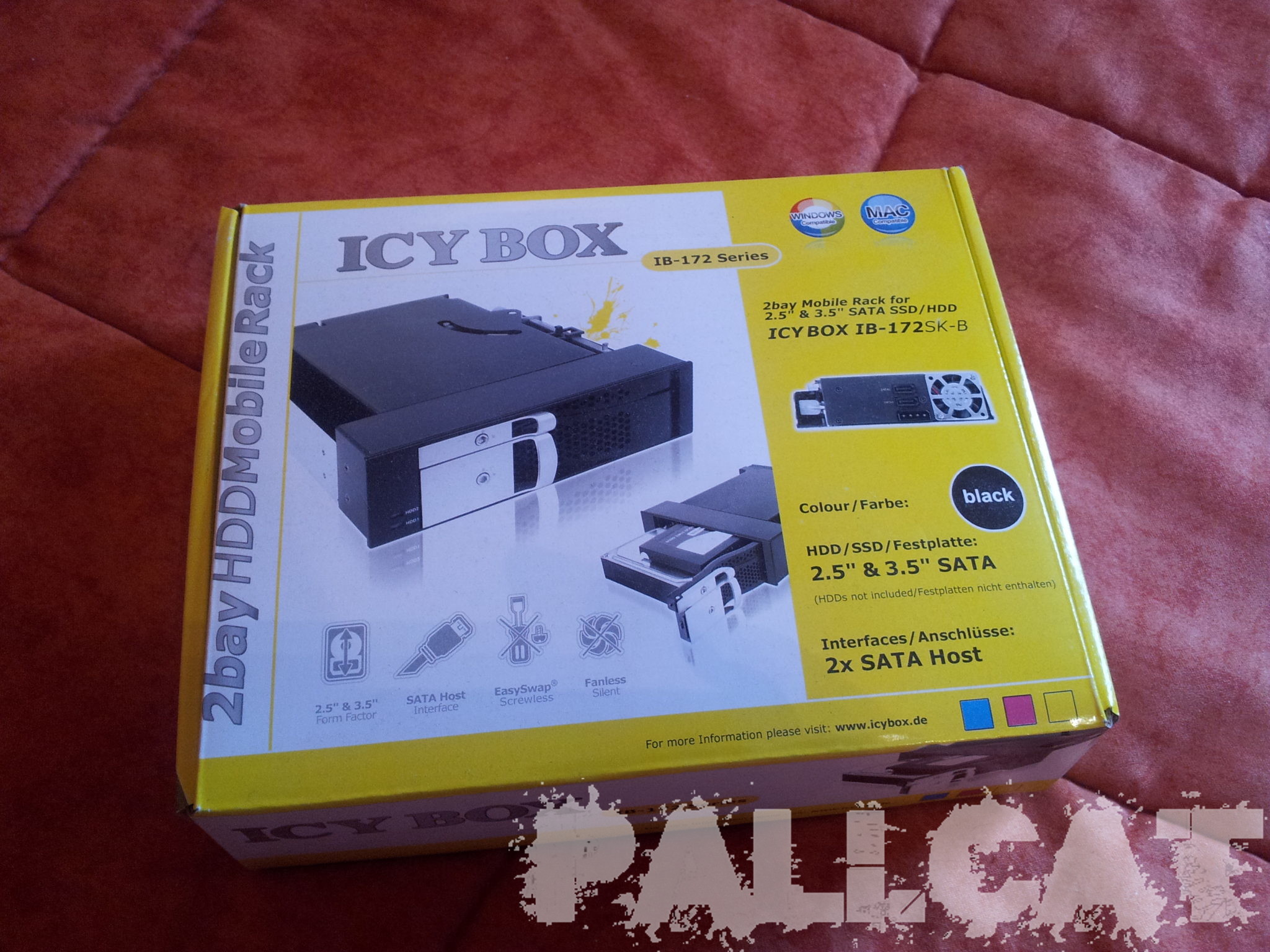
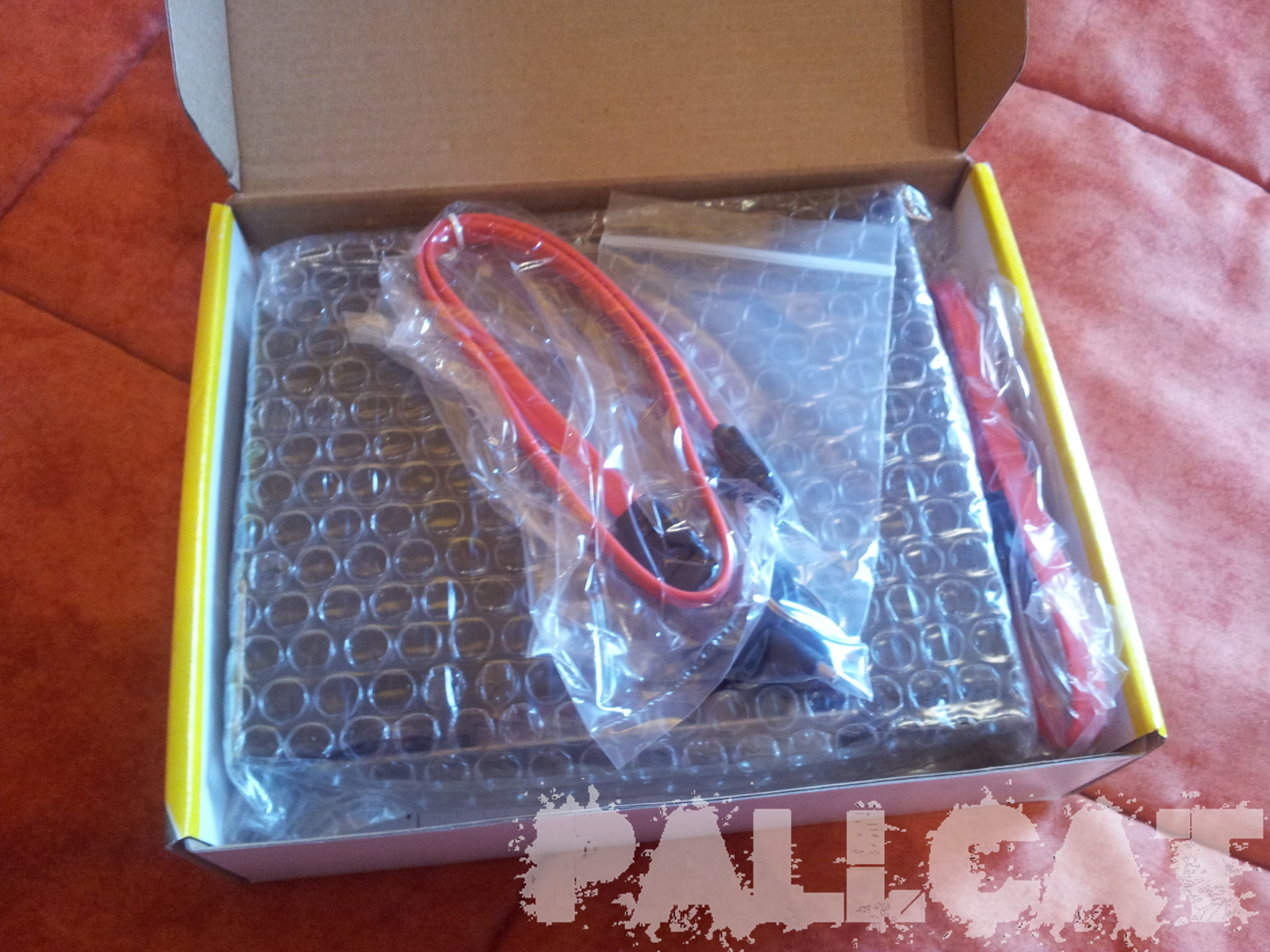
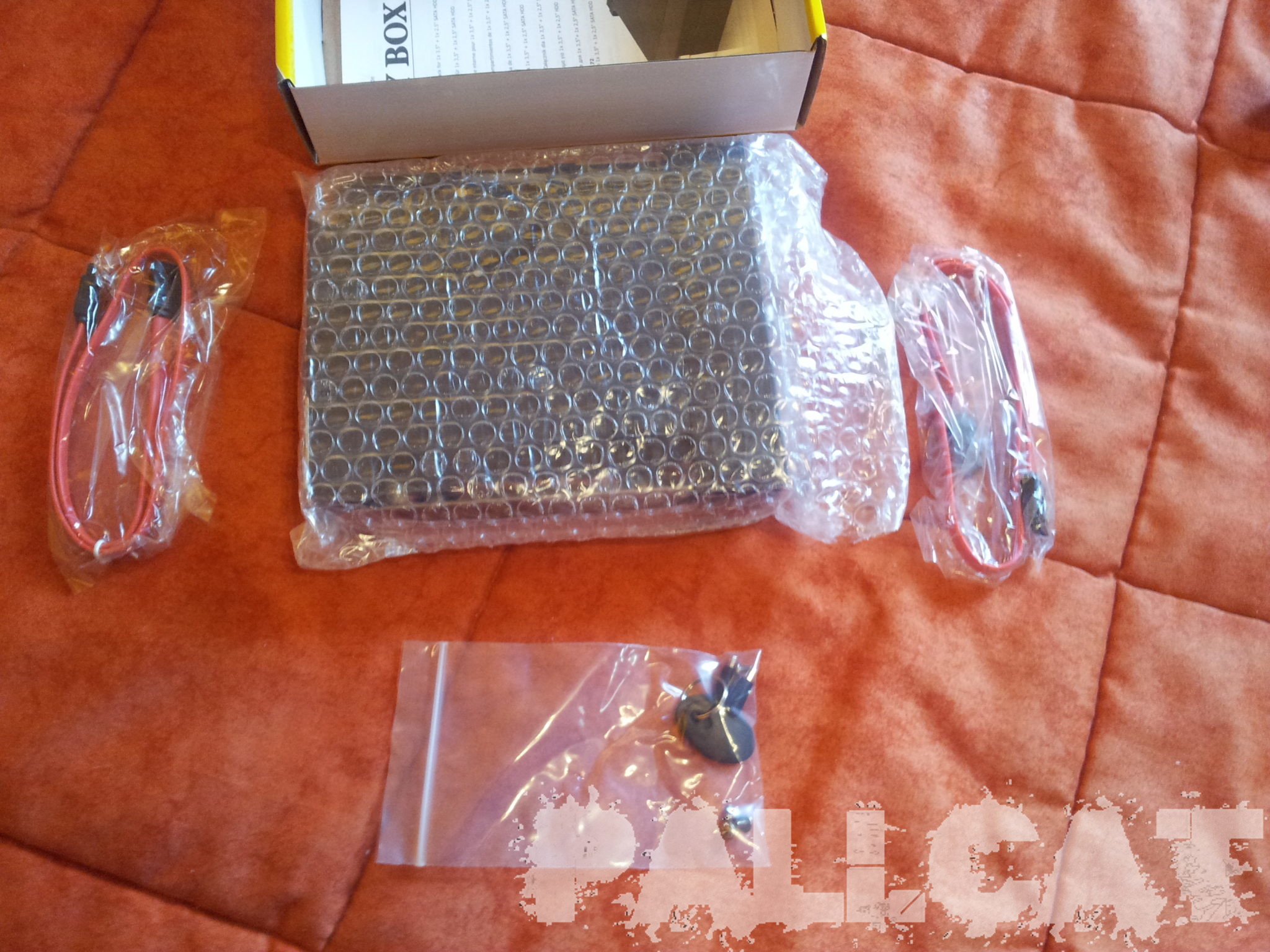
Et ve amb dos cables SATA i una parella de claus, que son més aviat una eina que no pas per seguretat.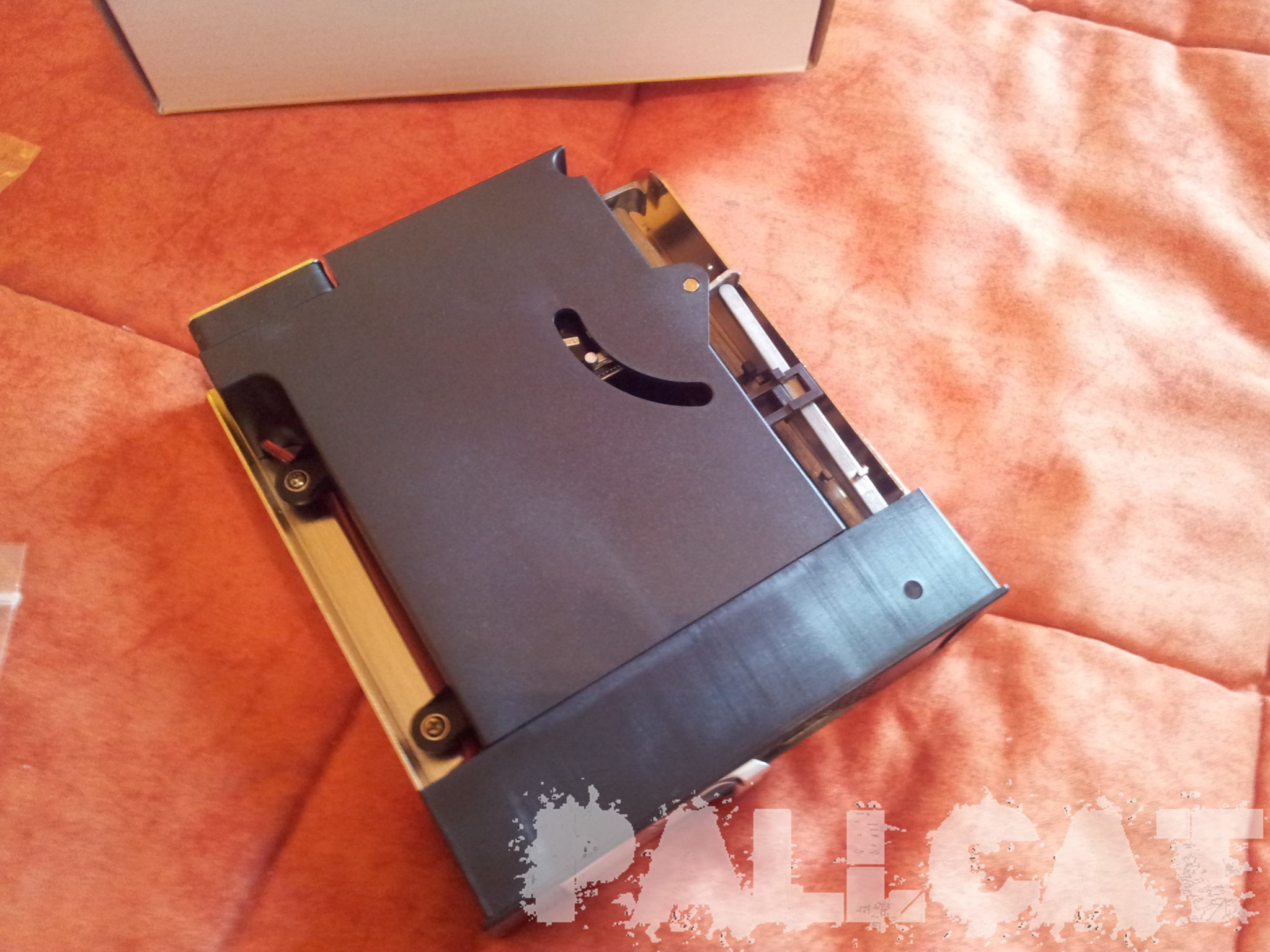
Carcassa d’alumini amb bona pinta, les palanques platejades son de plàstic, tot i que tenen acabat metàl·lic.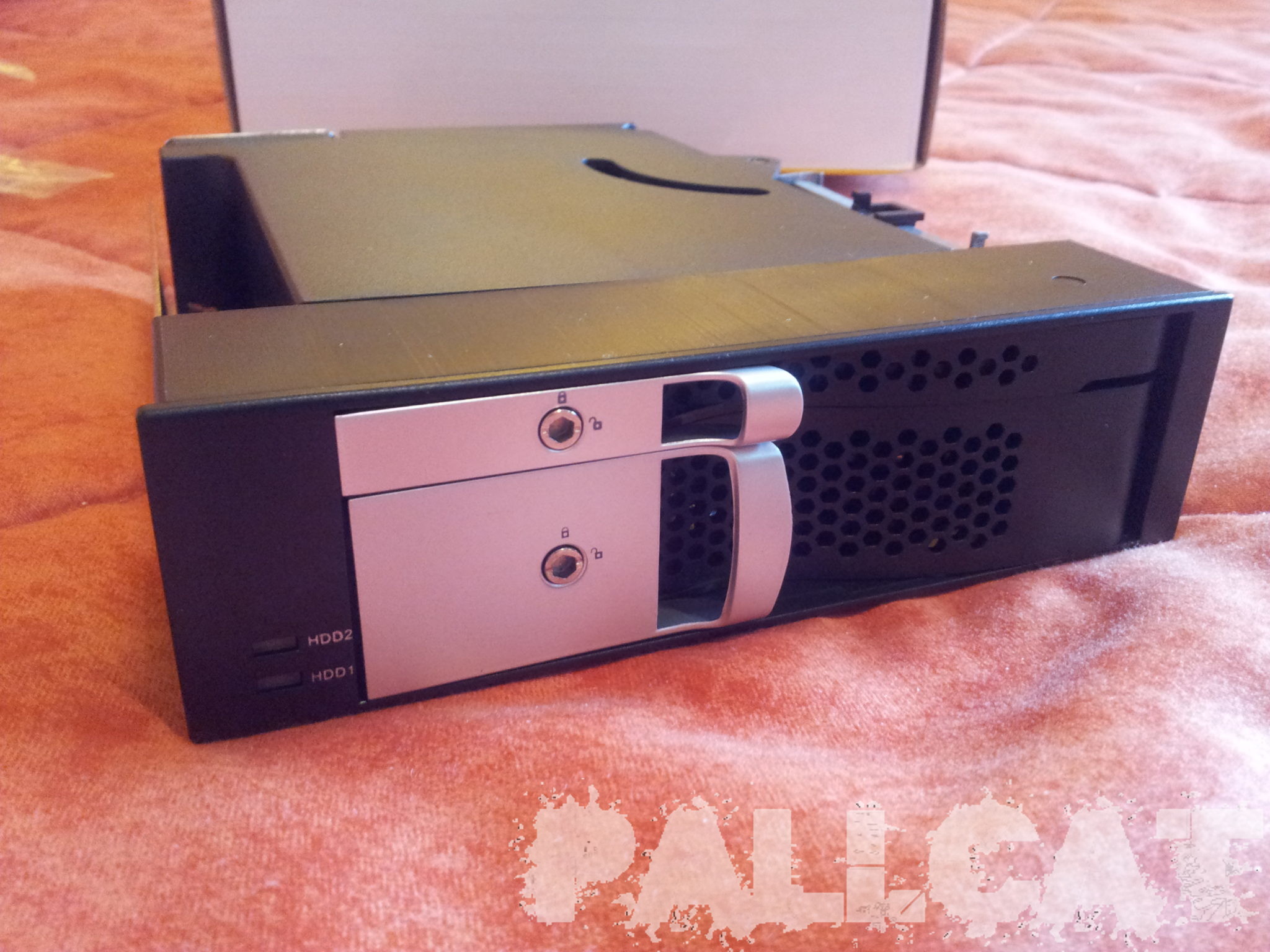
Porta un ventilador per fer passar l’aire, cosa del que crec que va més just. 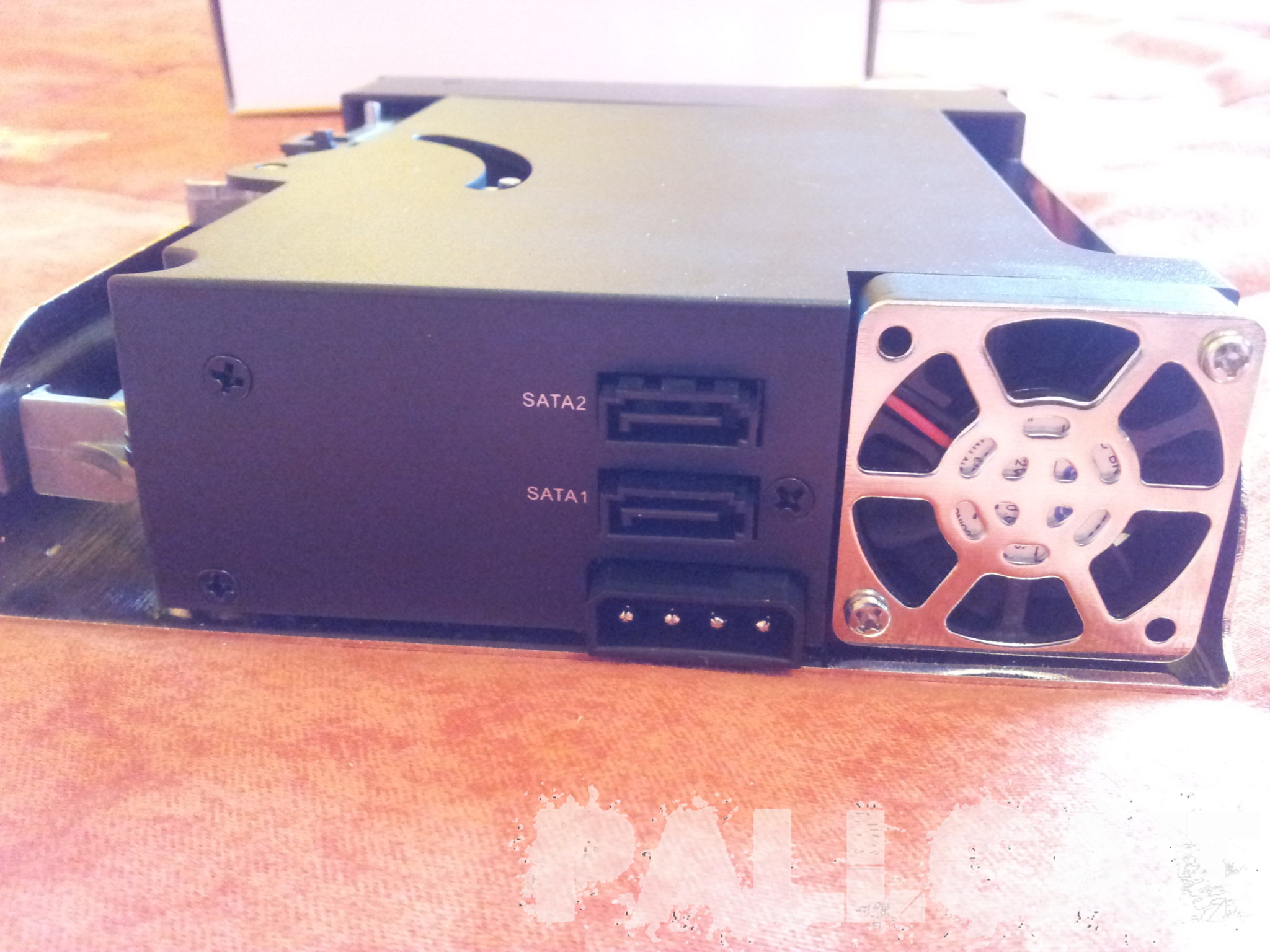
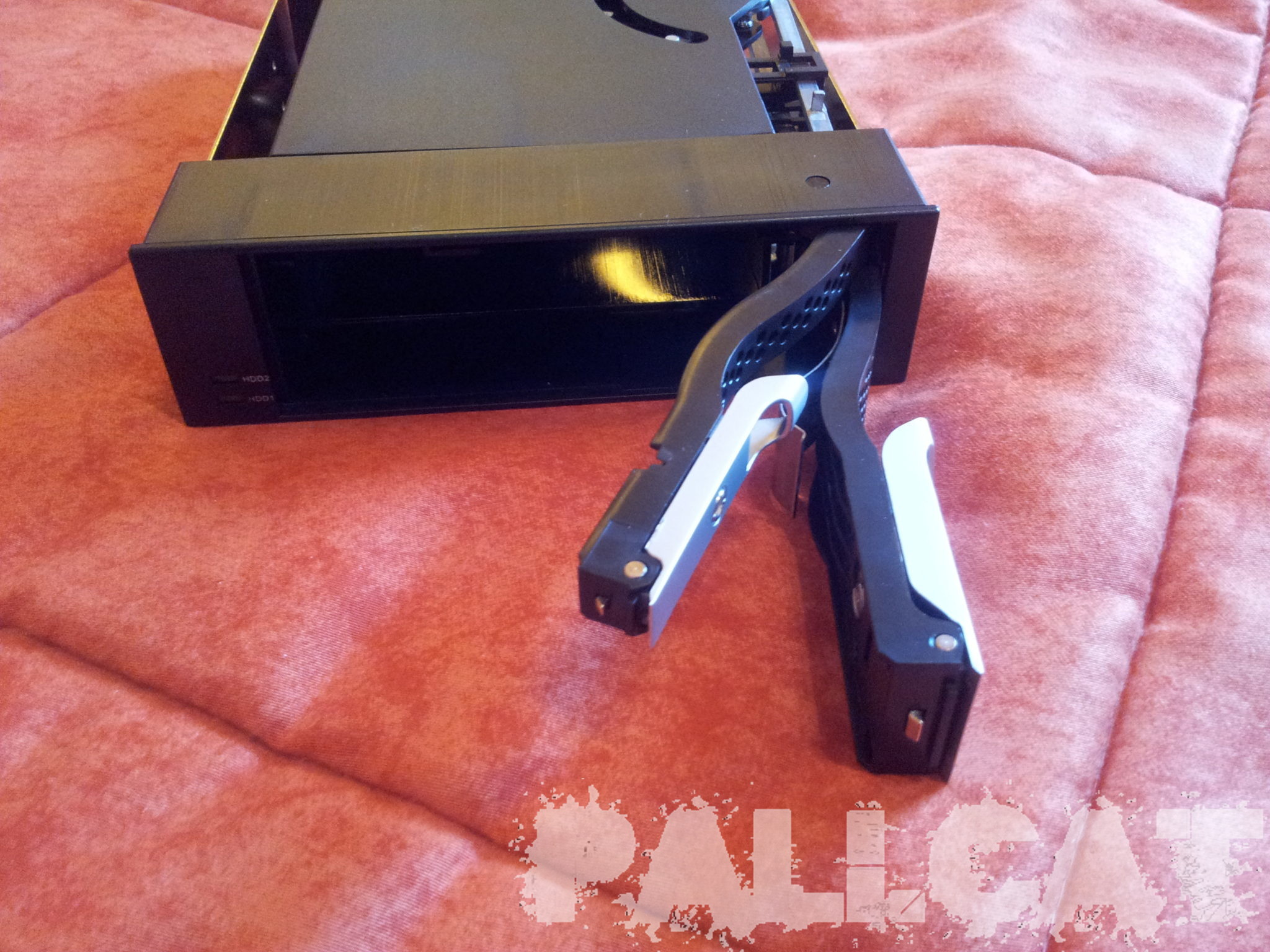
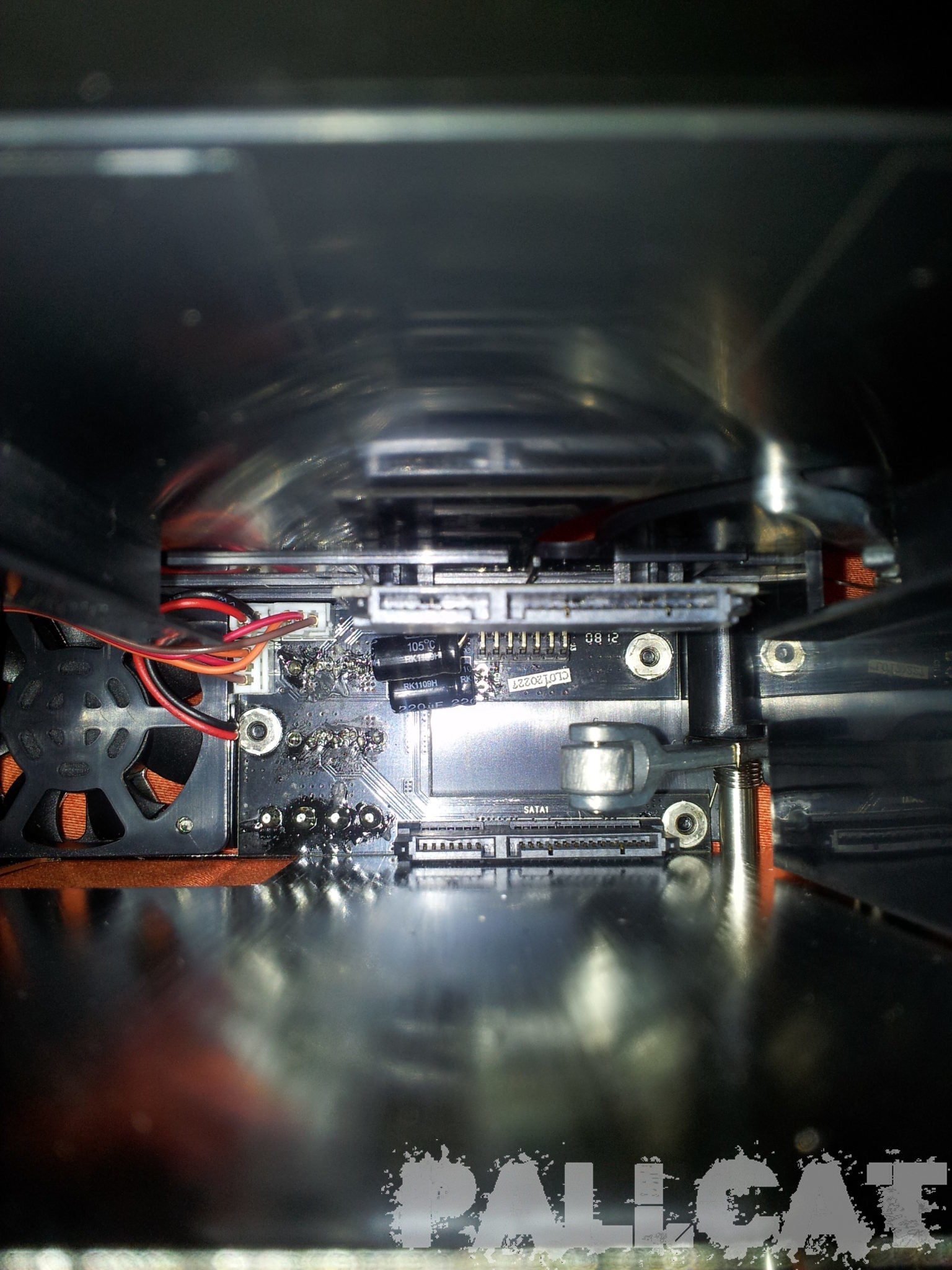
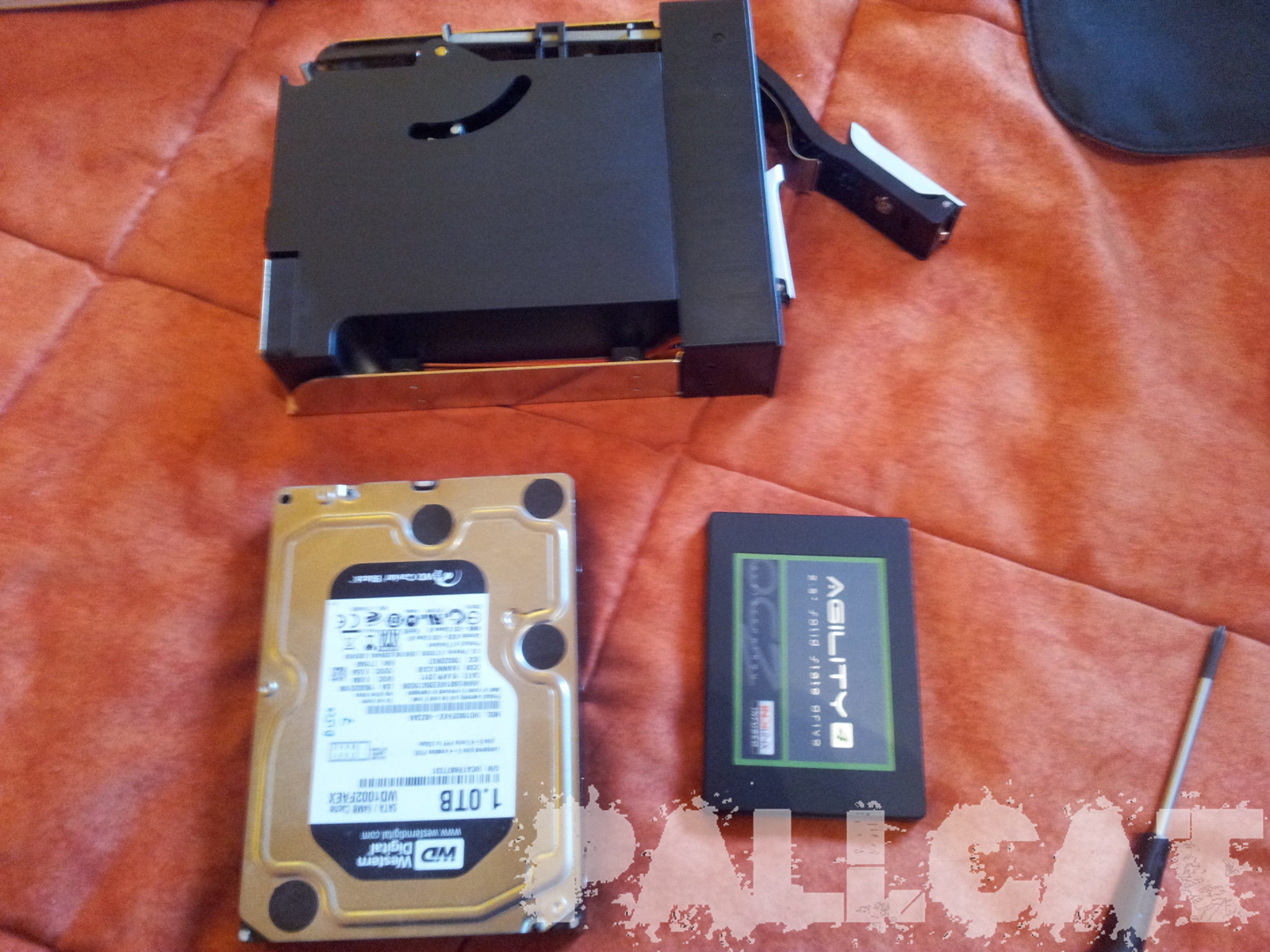
La prova la vaig realitzar amb un OCZ Aglity 4 de 128Gb i un Western Digital Black 1Tb 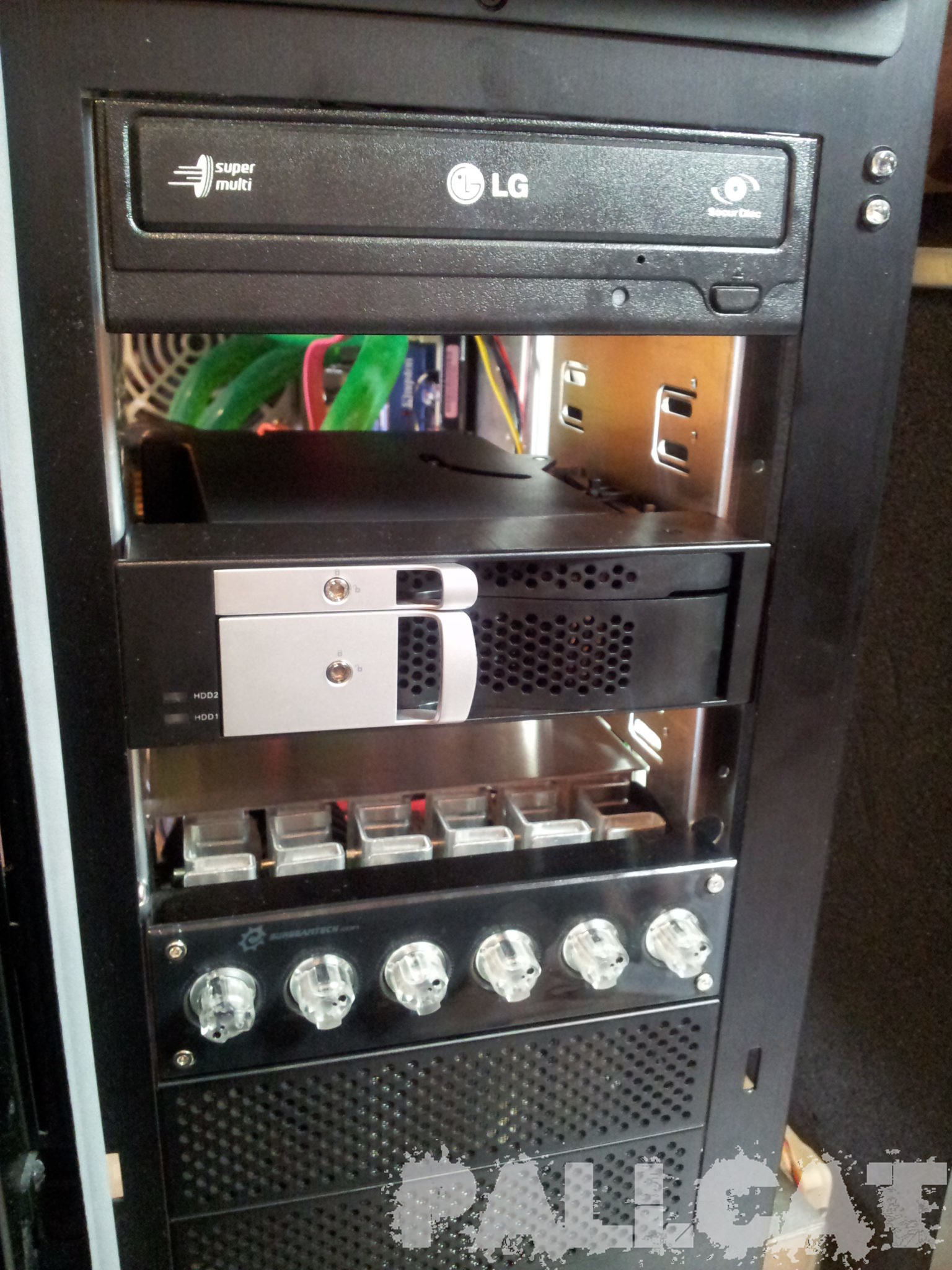 Aquest és l’aspecte que queda muntat en una gran torre, un pel ample per la baia de 5,25″ ja que entra a pressió.
Aquest és l’aspecte que queda muntat en una gran torre, un pel ample per la baia de 5,25″ ja que entra a pressió.
El resultat d’un us moderat, utilitzant 95% el SSD per treballar de normal i jugar, les temperatures dels dos discs superaven els 50º tranquil·lament en Idle. Per tant per mi no mereix l’ús de la mateixa, la resta de components tenen un acabat bastant bo per el preu, ronda el 30 i tants €.
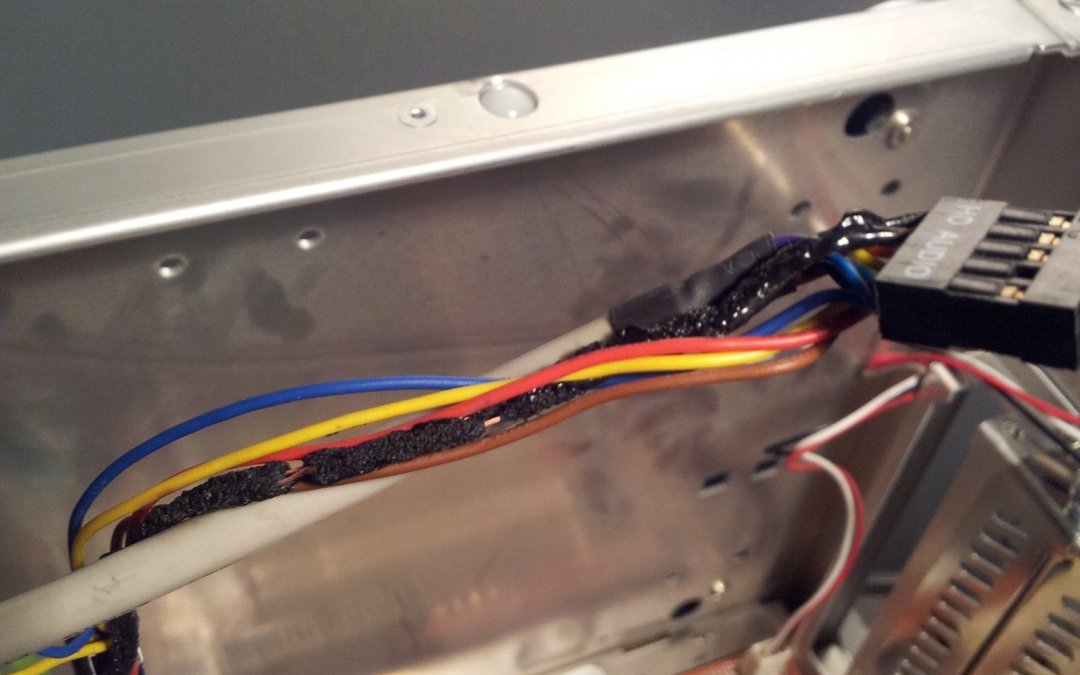
por Pali | Feb 4, 2014 | Hardware
Avui començo una sèrie de mini imatges, tipo face, però que cony, al meu blog, que per algo el tinc.
Reparant un equip em va ocorre una cosa curiosa, sembla que la placa tenia algun mal contacte i al provar l’equip va començar a sortir fum, s’estava cremant!
Aquest és el resultat
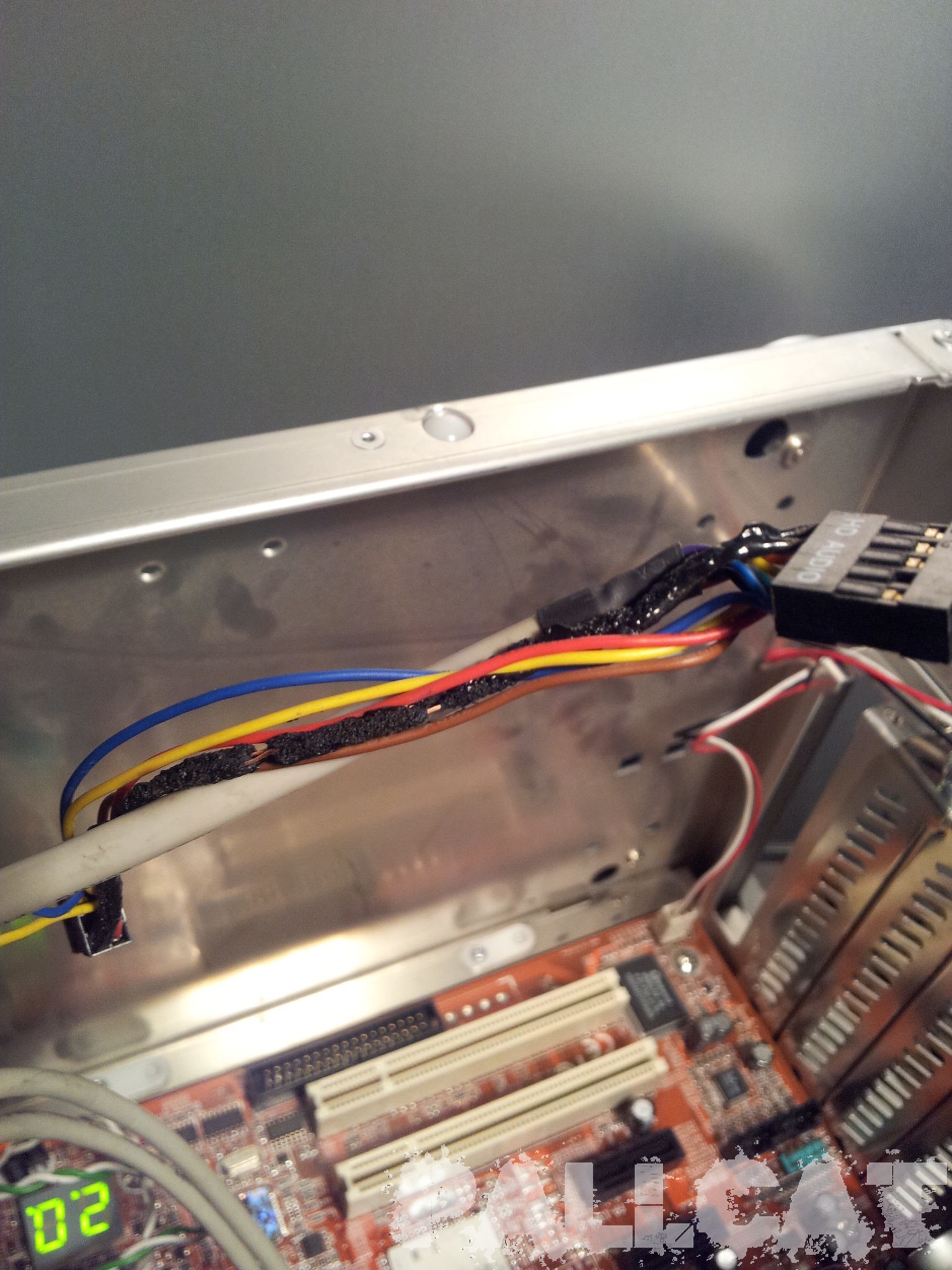
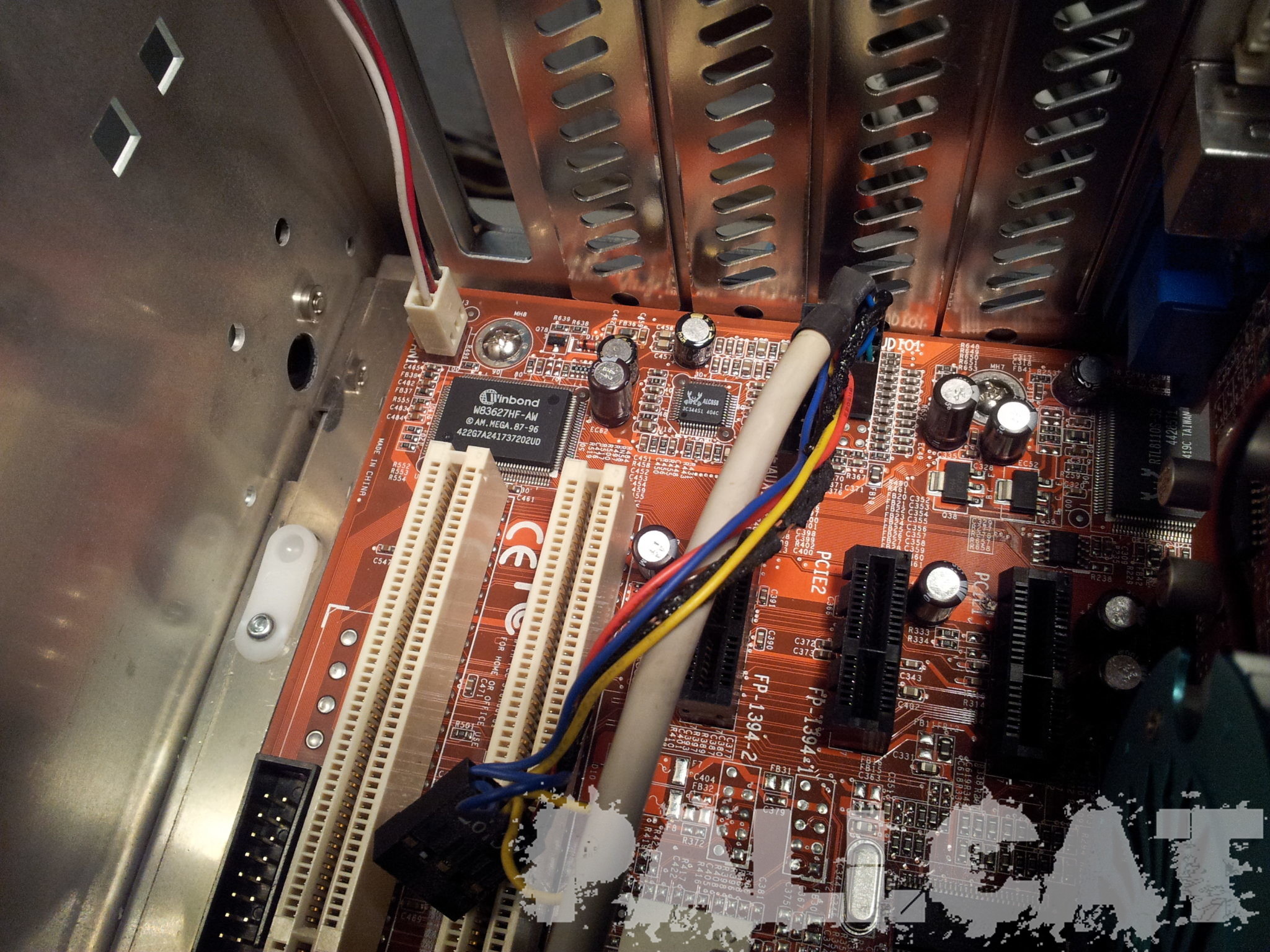 El cable que porta el àudio a les entrades frontals es va consumir, compte amb seguir fent funcionar velles glories i sentir olor a cremat…
El cable que porta el àudio a les entrades frontals es va consumir, compte amb seguir fent funcionar velles glories i sentir olor a cremat…
![Actualitzar BIOS controladora Sunix Sata4000]()
por Pali | May 17, 2012 | Hardware
En el procés de muntatge del meu servidor local, vaig trobar per un calaix una antiga controladora, comprada al 2006 sata de 4 ports, la Sunix Sata4000, que sembla el nom de l’escombra de Harry Potter, la nimbus 2000 xD, bromes apart, vaig començar tot emocionat a muntar el meu servidor amb 8 disc durs de 1Tb, per la placa base 4 i per la controladora altres 4.
 La placa base és una P5N32 SE SLI-Deluxe, molt rebentada per fer-li overclock i haver utilitzat refrigeració líquida. Això em donava els meus dubtes de fiabilitat dels components, i per tant no era un exemple fiable on provar la controladora.
La placa base és una P5N32 SE SLI-Deluxe, molt rebentada per fer-li overclock i haver utilitzat refrigeració líquida. Això em donava els meus dubtes de fiabilitat dels components, i per tant no era un exemple fiable on provar la controladora.
Un cop tot muntat i llest per engegar per començar a instal·lar el SO
 I utilitzant la placa abans nombrada..
I utilitzant la placa abans nombrada..
 Dons resulta que detecta el disc dur a la fase de la BIOS, però es queda parat allà, cosa que no em deixa continuar. Provo amb altres HD’s, tots de més de 137Gb com posa a la caixa, i al final desisteixo.
Dons resulta que detecta el disc dur a la fase de la BIOS, però es queda parat allà, cosa que no em deixa continuar. Provo amb altres HD’s, tots de més de 137Gb com posa a la caixa, i al final desisteixo.
Desprès d’indagar una mica, he trobat que el problema resideix en la BIOS de la tarja, que monta un xip SiI3114, immediatament visitant la pàgina del fabricant arribem a la conclusió de que és possible que el fimrware obsolet no detecti be els disc durs de més de 137Gb. Dons anem a ello.
La Primera opció és utilitzar la seva utilitat SiFlashTool, cosa que es complicat, ja que has d’obrir una consola de Ms-Dos i configurar aquests parametres
SiFlashTool [/BusNum:xx /DevNum:xx] [/File:filespec] [/v]
Dons vaig a buscar el BusNum, que es la primera variable



 Això que arribant aquí veig la pestanya de «Flash BIOS» i em quedo parat, vaig a fe run cop d’ull
Això que arribant aquí veig la pestanya de «Flash BIOS» i em quedo parat, vaig a fe run cop d’ull
 Aquesta imatge és un cop ja he actualitzat, però la bios que portava era del 2004. Ràpidament vaig a buscar el meu arxiu bios
Aquesta imatge és un cop ja he actualitzat, però la bios que portava era del 2004. Ràpidament vaig a buscar el meu arxiu bios 
 I wuala!, reinicio i ja funciona tot 🙂
I wuala!, reinicio i ja funciona tot 🙂

por Pali | Abr 24, 2012 | Hardware
Physical Installation:
 |
Critical: Hard drives and Solid State drives (SSD) are highly sensitive precision instruments that read, write, and store information on spinning magnetic disks. Special handling is required to protect hard drives from damage. Hard drives can be damaged by Electrostatic Discharge (ESD). Before handling, please use a grounding strap to protect your hard drive and other electronic computer equipment from ESD damage. |
- Turn the system’s power off
- Mount the drive in the system
- Desktop Drives: The drive can be mounted in a standard 3.5″device bay. The drive can be mounted sideways, on end, or even upside down as long as the mounting screws are used properly. Use either the four bottom screws or four of the side mounting screws to support the drive. This will prevent vibration and provide additional electrical grounding.
- Mobile Drives: Mobile drive installation will vary based on the manufacturing of the system it is being placed in. Please contact your system manufactuer for instructions on mounting your drive in your system.
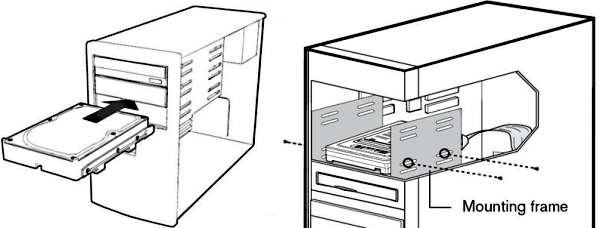
Return to Top
- Set the jumpers
Depending on your drive, your jumper settings will vary. There is generally no need to change the default jumper setting in order to use the drive. Your drive’s label will show the exact jumper settings your drive supports. See the images below for examples of our most common jumper settings.
Serial ATA (SATA) I, II, and 6 Gb/s Hard Drive Jumper Settings for 3.5″ drives:
Important: Caviar Black drives that have a model number of WD1002FAEX-00Y9A0 use the SATA 3.0 Gb/s pin layout – setting Jumpers 5 & 6 on these model drives will enable OPT1 which will set your drive to 1.5 Gb/s. Please Contact Us with any questions or issues with the jumper settings on this model drive.
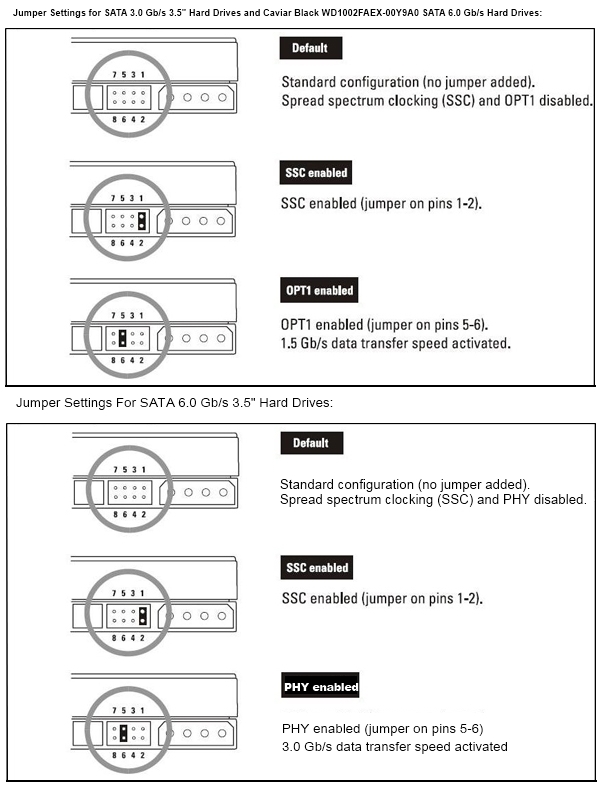
Return to Top
Advanced Format Special Jumper Setting: (for select 3.5″ ADF drives only)

Return to Top
SATA Mobile Hard Drive Jumper Settings:
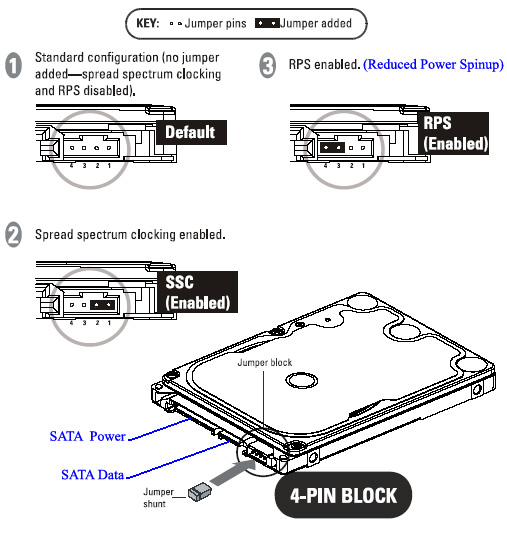
Return to Top
EIDE (PATA) Desktop Hard Drive Jumper Settings:
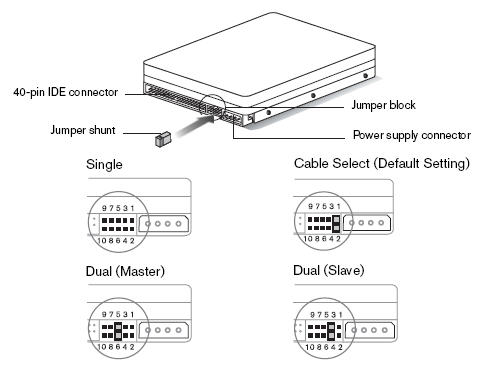
EIDE (PATA) Mobile Hard Drive Jumper Settings:
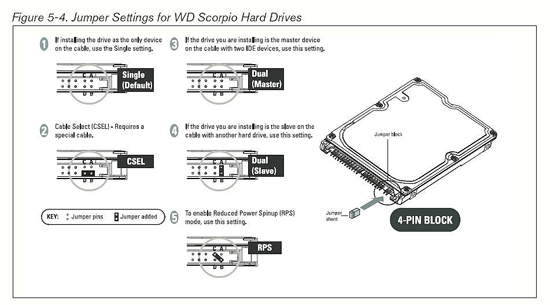
Return to Top
- Attach the power supply cable
To supply power to the drive you may use either the SATA power connector or the legacy ATA-4-pin (Molex) power connector on the back of the drive (see image below).
Important: If your drive has both power connectors, do not connect both the SATA and the legacy ATA power cable to the drive at the same time. This may result in damage to the drive.

- Attach the EIDE (PATA) or SATA interface cable:
SATA Drives:
The drive can be configured in one of two ways:
- Connected to a SATA host adapter card installed to the system.
- Connected directly to a Serial ATA connector on the motherboard
Unlike EIDE cables, either end of a standard SATA cable can be connected to the drive. Once you have connected the cable to the drive, connect the other end into the SATA host adapter card, or the motherboard. SATA interface cables have keyed connectors to prevent incorrect installation. Make sure the cable is no longer than 39 inches to minimize line noise and to remain within the SATA specification.
(This illustration shows the drive being connected the motherboard.)
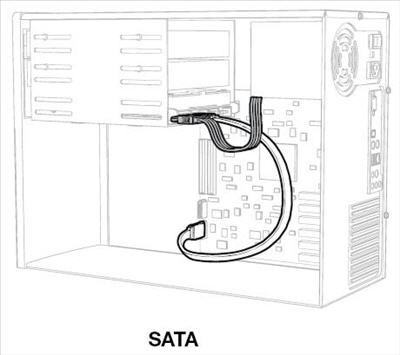
Return to Top
EIDE (PATA) Drives:
- Connect the EIDE (PATA) Interface Cable to the hard drive(s):
-
- If installing the hard drive as the only drive on the cable:
Connect the black connector of the EIDE (PATA) interface cable to the drive.
- If installing two drives on the same EIDE (PATA) interface cable:
Jumper the bootable drive as Master, and the other drive as Slave; then connect the Master drive to the black connector of the EIDE (PATA) interface cable, and the Slave drive to the gray connector.

- Connect the IDE Interface Cable to the Motherboard:
Attach the blue end of the IDE interface cable to the 40-pin connector on the motherboard. Match pin 1 on the IDE interface cable to the connector on the motherboard.
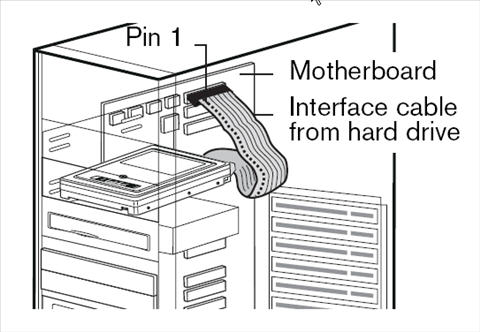
- Power On Your Computer
- Replace the system cover, reconnect the power cord, and power on the system. At startup, the computer will display all the devices detected on the system.
- If the drive you installed is not detected, restart the computer.
- At startup, run the CMOS Setup program and configure your BIOS so your drive is detected. Your system or motherboard manual should provide these instructions. If it does not you will need to contact your system or motherboard manufactuer for assistance.
- Restart the system to make sure the drive is detected.
- Install your Operating System, or configure your Operating System to see your drive. See the information below for assistance perfoming this step:




 Aquest és l’aspecte que queda muntat en una gran torre, un pel ample per la baia de 5,25″ ja que entra a pressió.
Aquest és l’aspecte que queda muntat en una gran torre, un pel ample per la baia de 5,25″ ja que entra a pressió.





























